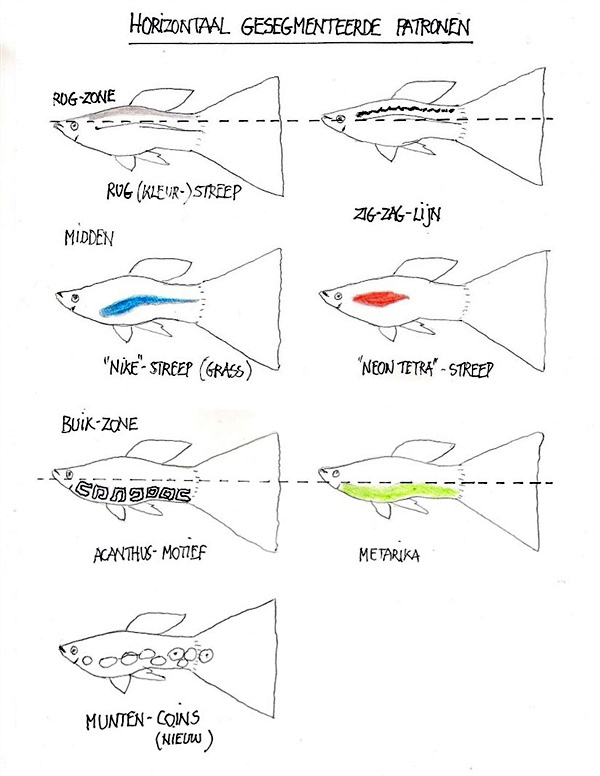Art XVIII
Guppy: the Genetics Revised
RUBRIEK: Guppy Kweek English Translation


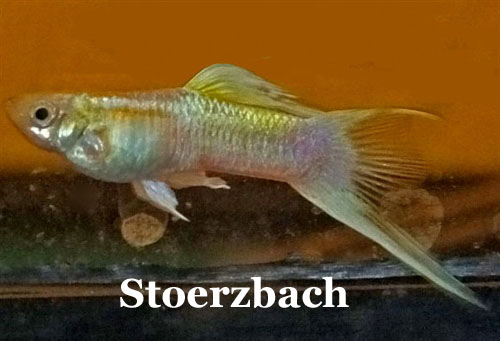
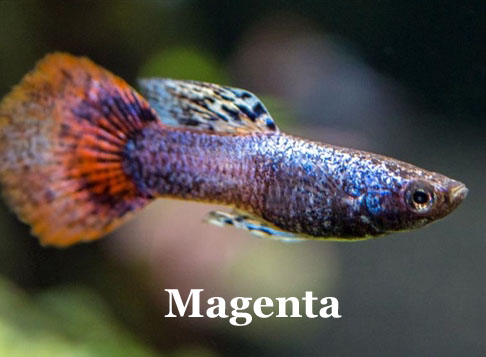
Most guppy keepers and even most guppy breeders are "just" ordinary people. I don't mean anything derogatory by that, but I mean that after their graduation courses, "science" in their daily life and hobby practice is usually far from their bed. Then when academics come up with a scientific system, they will not easily dare to question this representation of such academic educated people. One must be already a colleague from the Eas-tern Bloc cfr Storozew and Apriatin to dare to do that. Often they also lack the know-how to expose the weaknesses or the contradictions in these thinking systems. So often, representations are simply taken over on the basis of authority . An example of this: in recent months, we have been pushed through a lot of incorrect conceptions about the corona virus, ba-sed on the "authority" of the virologists and the government.
As for the gup's genetics, the discovery of different skinlayers some 50 years ago was probably a groundbreaking and progressive discovery. Don't get me wrong: I don't deny the existence and its value; that would be diffi-cult too. And I myself still frequently use it as a metaphor to make a com-parison with the clothes in humans: an overcoat, a sweater, a shirt, a T-shirt, up to and including underwear. When one puts on a thick winter coat, one cannot see the rest of his clothing underneath. Such layers are for example Tuxedo, Japan Blue, Magenta, Stoerzbach, ..... In warm weather, textile is played off, and more is shown. In the gup, making the outer layers "inactive" or transparent can better show what is underneath. This is the case with blond, and with albino where everything becomes transparent to the underwear.
So what in itself is a useful representation, can easily degenerate into a compulsed vision when one makes the mistake of using what I call system thinking . By which I mean, one is using this as a procedure, to apply EVERYTHING to it, and far too literally , while it is the purpose to apply the principle .
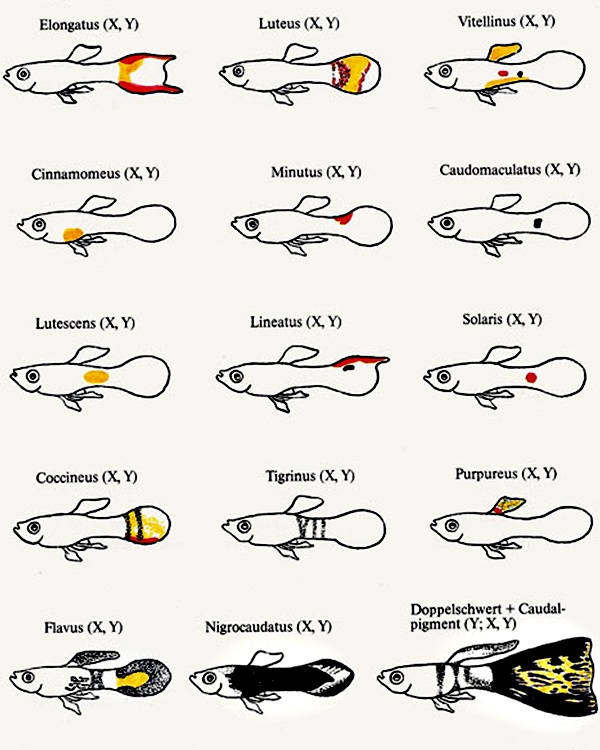

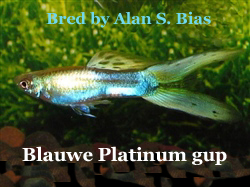
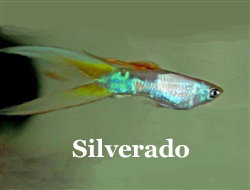
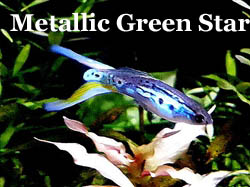
An example to illustrate this. As "silver" is recorded: the "action" of two genes, namely "blue" (ground layer) and gold (see first figure on the left). First problem: calling something a "silver layer" that does not really look like silver, does not clarify the mind and can only cause confusion. Second problem: the fact that there is question of an extraction and a combination, indicates more a collaboration between two layers than simply the mer-ging of two gene pairs. Third problem: one can achieve the same effect in other (and better) ways: the "silver shine" can also be applied by platinum, metallic, or Silverado (from Endlers) (see photos below). Even magenta can give more silver shine.
Attributing all this to different genes also does not ensure coherence in his knowledge, leaving it very fragmentary . O. Winge (see figure above), later followed by Kirpichnikov , in the beginning of the guppy exploration tried to create a register of all variations which they could observe at the time on the guppy, each time provided with a name. Hardworking and understandable for the time, but in the meantime one should know better: registering all possible shape details is a typical left-brain way of tackling a problem. The way of right-brain thinking is to look for the global lines, and make a subdivision from there. In this specific case: put all those pos-sible spots and patterns in a number of basic strains . In my Genetic Genealogy Table (see: here ) I have traced all those possible variations back to 8 base strains (see figure below). One has to work from overview to de-tails, and not the other way around.
Such an approach may be strange to "science", but it gives a better over-view : about the patterns, what connection the different strains have in their history of origin with each other, how they can slip and interact in and with each other, and how that gup gene pool can produce new combi-nations over time through mutations and the formation of fixed genomes that hook together. This is a very DIFFERENT repertoire than naming all variations and attributing them to a gene.
Another way, that has the immense advantage that genetics is not reduced to a question of semantics or systematics -the endlessly arguing about a definition or a place - and makes thinking about it freer, more nuanced and less bound to one particular representation. People are closer to the living reality that is dynamic, instead of being stucked in a representation as if in a straightjacket, and not being able or unwilling to discuss it. I was shocked how geneticists can lock themselves up as fundamentalists in THEIR vision, without being able or willing to listen to others with an open mind. However, every knowledge must be willing and able to adapt to what the Living Practice brings as change. In this case, the "genetic representa-tion" (= the map of visions) needs to be updated and revised by what the guppy breeders around the world are introducing as new "material".
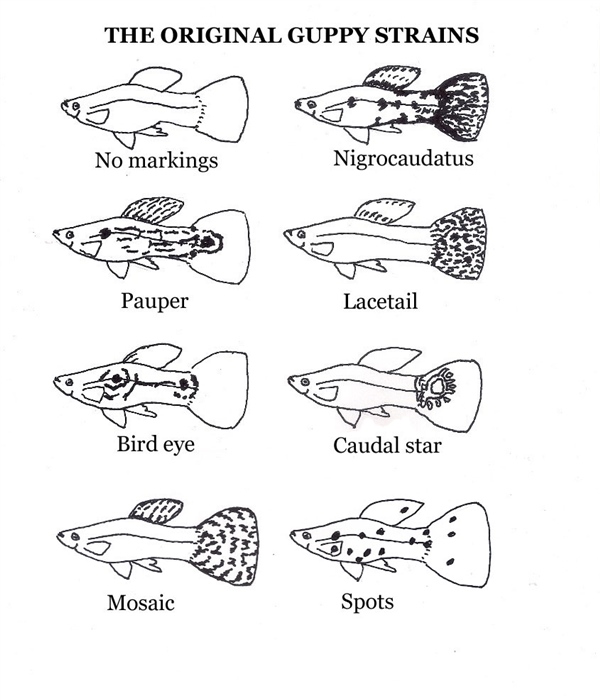
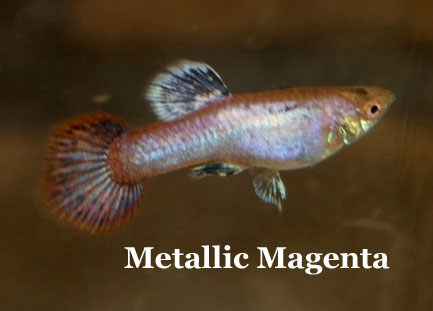

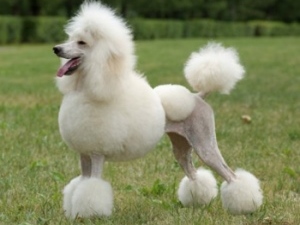
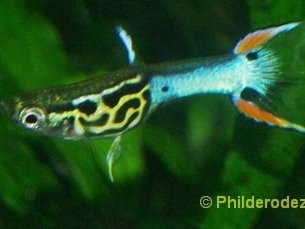
In the way genetics is handled , is therefore knows already in the source a hidden conflict : it is not a "neutral" observation and study of the Nature ; it is the study at the service of men . Whether it is the purpose to breed new guppy strains, or to have the hereditary mechanism better under control , there is always a bias TO the human needs and visions. There is a (mental) manipulation that goes hand in hand with the genetic manipulation .
Especially in the breeding of types that nature itself would never produce. Well, the same conflict between nature and culture , is also reflected in how someone approaches his garden. The more he imposes the human structure and needs on his garden, the further away his garden will be from the natural happening. The more he will have to perform all kinds of interventions in his garden in order to maintain the artificial balance. A lawn requires weekly mowing, for example. However, the more the garden can be left to itself , the more Nature itself provides the balance and arran-ges itself the actions to install that balance.
Large-scale agricultural cultures are much more susceptible to diseases, plagues and epidemics than small-scale organic companies that function more in harmony with nature and where mixed cultivation is applicable. Genetics manipulated vegetables and animals are ultimately more one-sided and less healthy than vegetables and animals that can grow up in a natural biotope and in harmony. Why I mention this here, should be clear: we can experience the same conflict in our guppy breeding , and are faced with the same choice. A basic issue is: do we let our guppies grow up in situations that are as natural as possible (with plants, soil, ...); or do we primarily focus on the "production process", and the ease of doing OUR operations? And also: when creating artificial strains, do we primarily think of the welfare of the gup, or of our human aspirations and goals?
Some may find this far-fetched, but that rather illustrates how "normal" one can start to find things, when one functions all the time in a closed world, and never gets to know other signals or information that come from beyond .
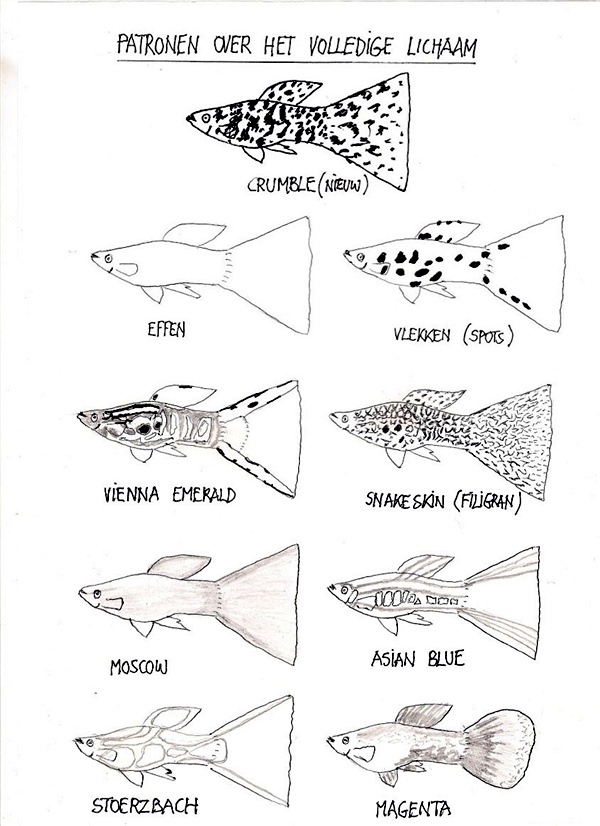
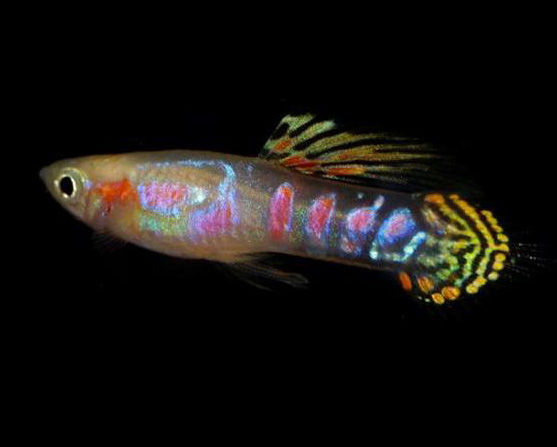

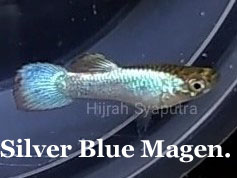
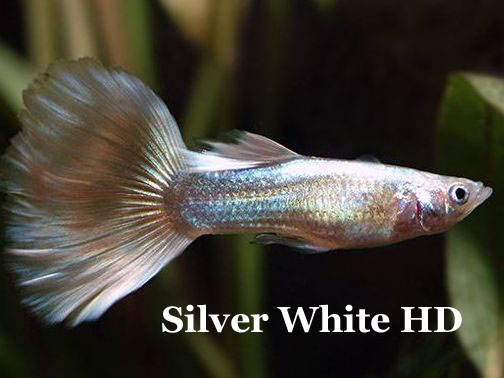
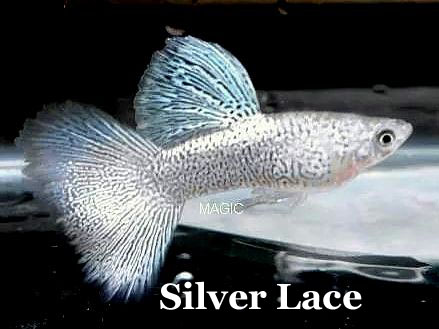
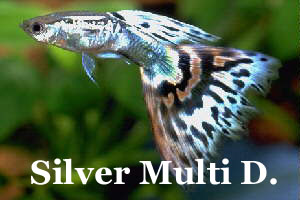
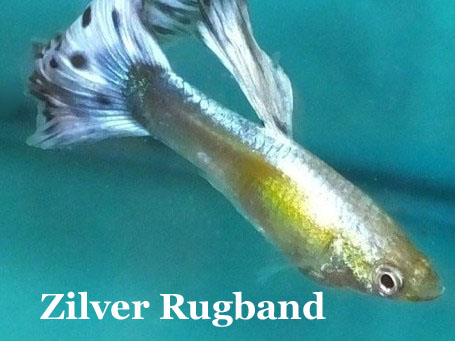
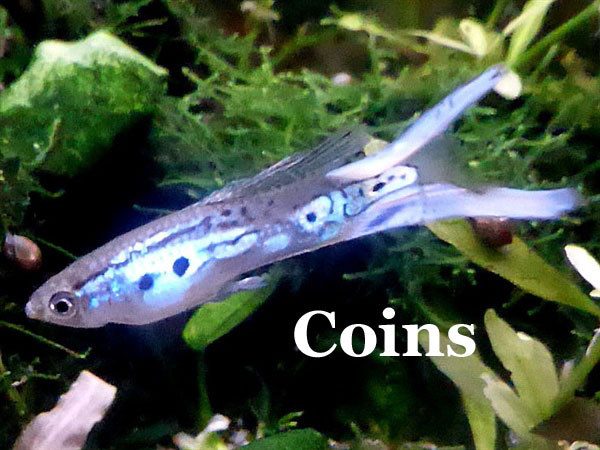
And for those for whom all this is too "abstract": the genetics of the guppy was NOT "written" by the guppies, but by men. At one point in time, a particular person within the guppy clubs has thought, "You know what, we give this missing combination of alleles for the ground layers, then the name "silver". Then that gap is immediately filled. " Then the scientists studying the gup's genetics in its natural biotope, like here are much closer the reality for which genetics actually serves as a natural process: Experimental study of evolution in nature and its impacts on ecosystems.
Science exists by the grace of research, and research must be carried out by a questioning and studying mind. Genetics may help guppy breeding by understanding its mechanisms to breed more beautiful and healthier gup-pies as a hobby and as bread-making, but in no case genetics can be used to serve human purposes and ambitions, against the interests of the spe-cies and nature. Or better: it can be used that way, but then there is abuse.
So the genetics of the guppy must be revised, simplified so that it will im-mediately become clearer and more understandable. This can be done by shifting the focus from genes and color cells to the PATTERNS seen in all those breeded strains. Some patterns spread over the entire body . As they are: the solid pattern (no drawing); the Moscow pattern; the spots pattern; the Snakeskin pattern with its filigran drawing that can range from fine - Lace - to coarse chunks - Crumble -; the Wiener Smaragd or Vienna Emerald; and less obvious because so far not viewed like that, the Stoerzbach , the Magenta , the Asian Blue (see drawings above) and the Yellow Micariff .
These patterns are the "jackets" with the "decorations". With Moscow and Magenta, these are overcoats whiich let difficult see what is under-neath. With Snakeskin, Spots and Wiener Smaragd, the pattern is tatooed, as it were, on a translucent raincoat. Plain is then a uniform raincoat. And Stoerzbach and Asian Blue have a kind of reflective fluorescent raincoat, which hints a few things.
The normal brown-gray wild color is neutral, and makes that outer layer still relatively transparent (semi-permeable). Blonde has a golden sheen and makes it transparent; and albino makes everything visable tiil the "underwear". The yellow color cells in the second layer can provide a gold shimmer , and the third layer with blue and white color cells can provide a silver shimmer . This can be also accomplished in several other ways, and can be done as well in part or in combination. The fact that the drawings are indeed patterns is proven by the fact that they can still be seen in guppies with blond or albino and therefore do not have black in the fourth layer (see also here ).
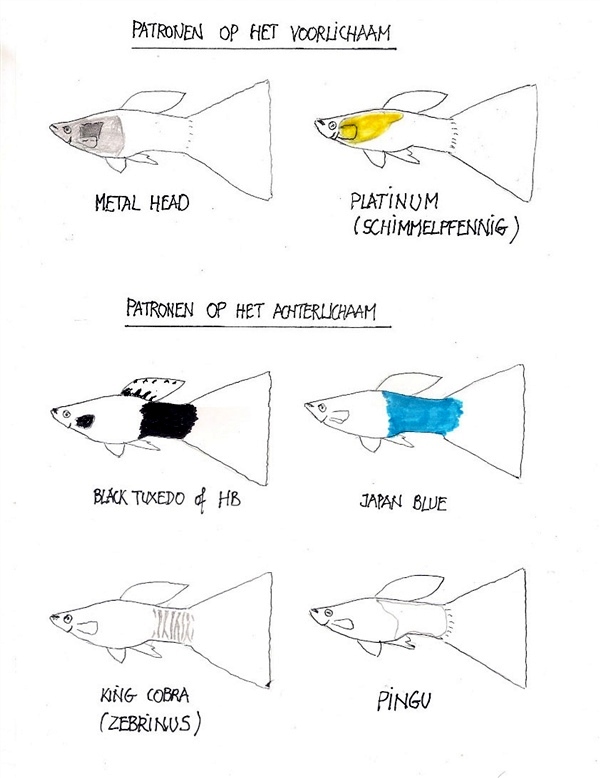
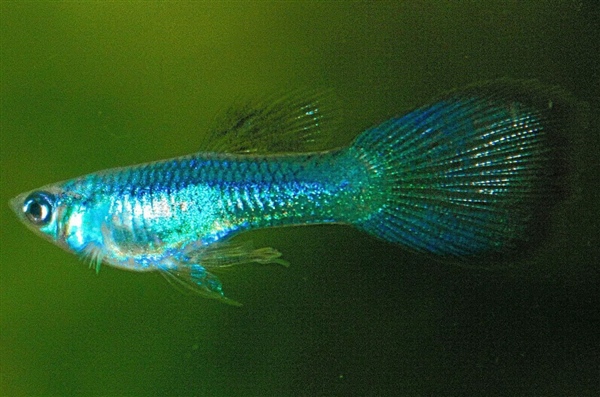
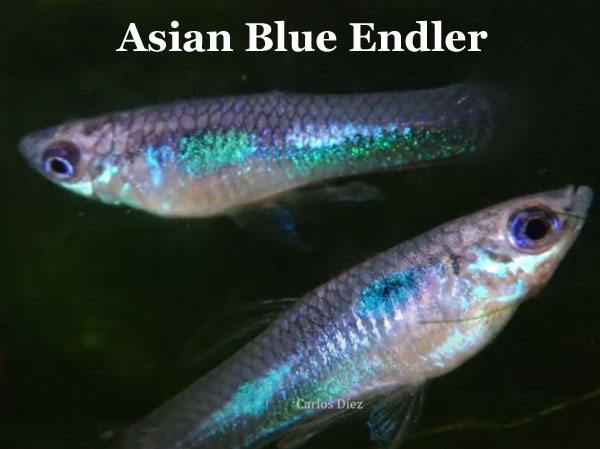
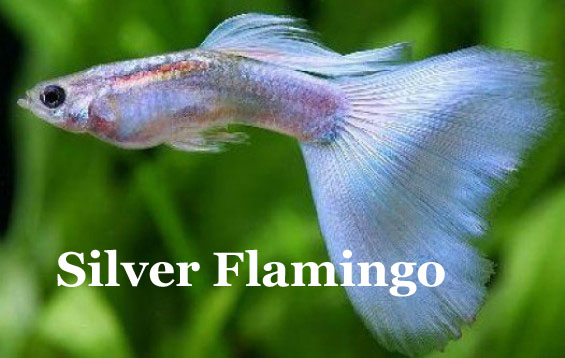

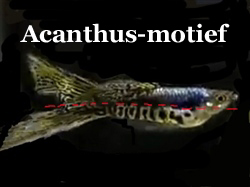
With the Tuxedo , that black forms a "pants" that covers the rear body . The same goes for the blue and white trousers of resp. Japan Blue and Pingu . The Zebrinus stripes found in King Cobra, Tiger and Wiener Smaragd consists of a stripe pattern, with gaps through which the other colors can be seen. In the fore-body , MetalHead and Schimmelpfennig Platinum are patterns that appear regularly (see figures above). They are all segmented vertically .
Patterns that are segmented horizontally in the longitudinal axis of the fish (see figures below), come in all kinds of shapes and colors: ranging from bands and stripes on the back, zigzag lines, a blue " Nike "stripe (at the Grass), a red" Neon Tetra "stripe, over a green belly band Metarika, up to and including two patterns that have not yet been noticed and descri-bed. Being, the Acanthus motif found in crosses between Snakeskins and Tuxedos, and Coins , a row of silvery and gold-colored patches on the lower body. Because I liked it so much, together with the caudal Green Star, that is why I have been breeding with the metallic-blue double sword strain for more than two years.
And to end the article with a connection at the beginning: the silver shine is not a trait that can be attributed to one pair of genes, or to one layer. By the way, this is not the exclusive right of the guppies: many fish in fresh-water and in the oceans can display that silver shine. This is specific for the medium water, where reflection can have a signal function. If an Asian Blue therefore glows silvery, this is primarily due to this mutation. There is not much information about this mutation yet, but if one observes a photo of it carefully (see left), one can notice dark stripes in the pattern. In the picture below of the Asian Blue Endlers, one can see roses, purples and blue-greens in the spaces in between. This makes it clear that Asian Blue is not a contiguous pattern, but rather consists of branches with semi-trans-parent "membranes" between them, diffusing the colors like a lens.
In my blue double-sword tribe, by the way, now and then a specimen ap-pears that shows a completely and permanently uniform silver layer: they look like medieval knights sitting in a shiny armor. They also have a little bit of yellow and a regular round tail. Until now I have always got rid of it, but if one appears again in the future, I will first take a photo of him as a testimony.
